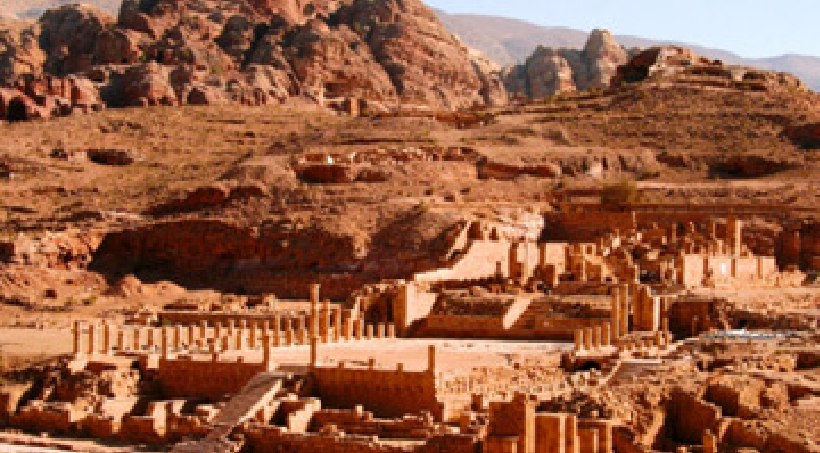Great Temple
Great Temple
(25 BC – 100 AD) Occupying an area of 7560 square meters, the 'Great Temple' complex is by far the largest building in Petra. Accessed by a monumental entryway, it features two successive open-air areas at different elevations. The lower precinct consisted of a spacious paved courtyard flanked on each side by triple colonnades. Each held 60 columns, assembled from carved drums, bearing capitals of imported limestone with carved elephant heads, exotic symbols of power. A number have been partially re-erected. Excavations have revealed that the upper precinct, accessed by a pair of monumental stairways, featured a small open-air theater with semi-circular tiered seating. Its small size and layout suggest that it may have been designed as a council chamber or a judicial assembly hall. The presence of this theater and the adjoining columned courtyard suggests that the building served primarily as a civic complex under the patronage of the Nabataean royal house. The structure's downtown location outside the Qasr Al-Bint temple precinct points strongly to its secular function, although religious activities may also have taken place in this grand complex. Other features of the Great Temple Complex are a subterranean drainage system; and baths, which were uncovered in the west of the temple; and a workshop for producing plaster molds, found at the south end.



